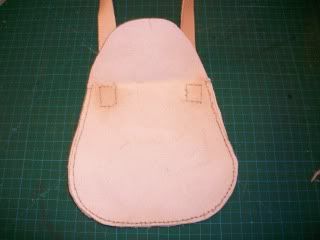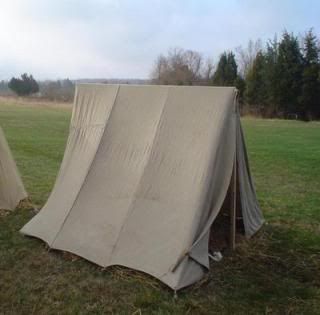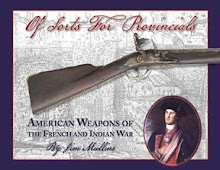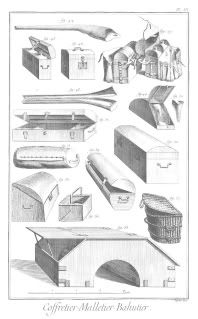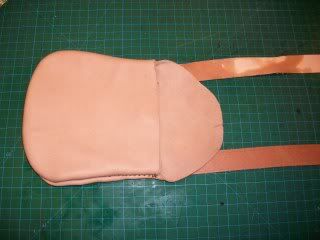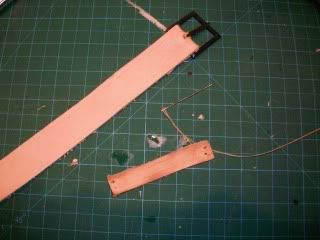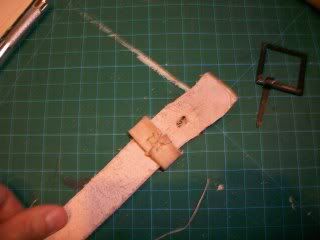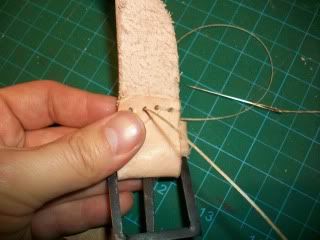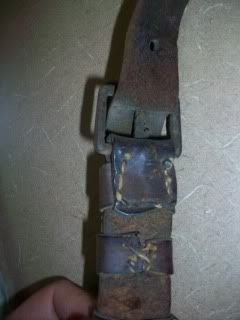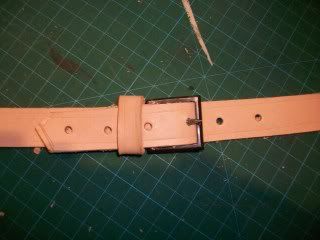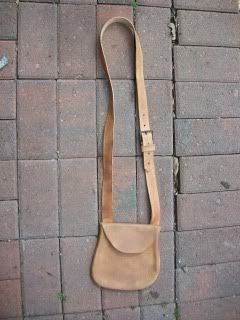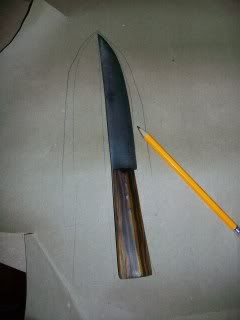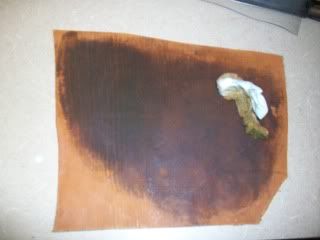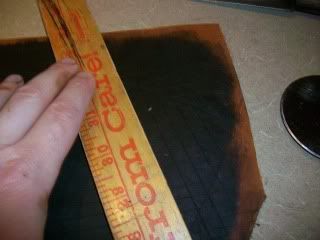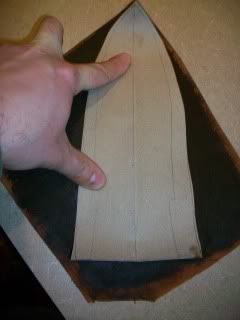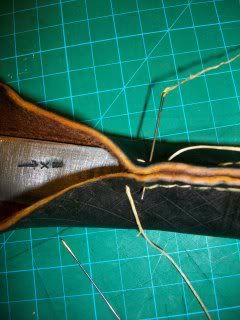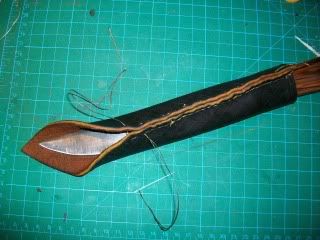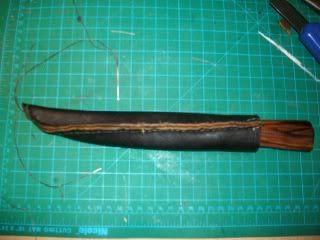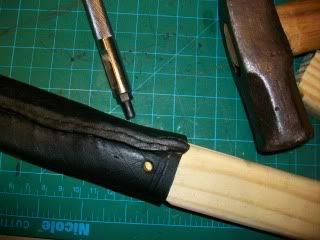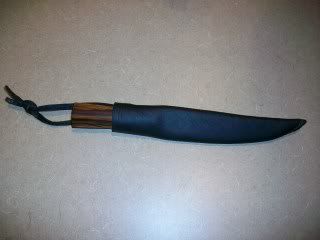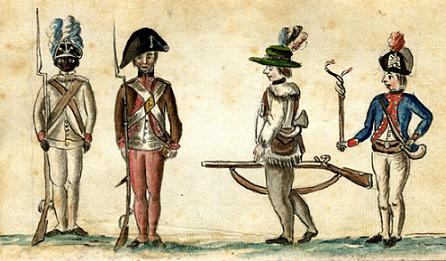
Next on our DIY Va backcountry kit list is a shot pouch (also sometimes called a shot bag).
These bags were used for carrying ammunition and a few necessaries like extra flints.
Some shot bags were made by professional leather workers and imported ready made.
Daniel Moore trade card, ca. 1765 showing an English shot pouch on a belt. A bill for his Virginia customer John Norton is on the reverse; with prices for a neat cocking gun and powder horn sent from London. John Norton & Sons Papers, John D. Rockefeller Jr.
While others were made and then sold in
America. Saddler Henry Fleming of Norfolk advertised that he made and
sold "Shot Belts and Bags" (
Va Gazette 12/10/1772):
Some shot bags were made at home, or in Army encampments. Most of these bags were made of leather, although some were made of cloth:
The 2d Virginia Regiment October 12, 1775:
“… Each Company is to draw a sufficient Quantity of Dutch or Russia Drilling to provide Each Soldier with a Shott Pouch with a partition in division in the middle to keep buckshot and bullets separate. Each Soldier to make his own sack and Shot Pouch as near one General Size Pattern as possible…”
Virginia Gazette
(Purdie), Williamsburg ,
August 16, 1776. Supplement.
RUN away from the subscriber living on the levels of Green brier, two convict servant men.
One named WILLIAM ROW, 18 or 19 years old, about 5 feet 8 inches high, of a fair complexion,has dark hair, is an artful fellow, and may forge a pass, as he writes a tolerable good hand; had on, when he went away, shirt, drawers, and leggins, of coarse country linen, and took with him a coat and waistcoat of cotton and linen almost white, also a smooth bore gun of the best sort, double breached, which had part of the stock broke off before, a shot bag and powder horn, very much carved, the strap of the powder horn made of striped girting, and the shot bag of blue plush. The other named ISAAC SINGER, 5 feet 4 or 5 inches high, about 25 years old, thin visaged, small made, of a dark complexion, and has very thin whitish hair; had on, when he went away, old leather breeches, a coarse shirt, brown leggins, and old shoes. They are both Englishmen, and took with them a fur hat, besides other things too tedious to mention. Whoever apprehends the said servants, and secures them so as they may be had again, shall have 40s. reward for each, if taken in the county; if out thereof 4 l. or each, paid by ARCHER MATTHEWS.
Some were worn on the belt vs. on a shoulder strap, although this seems to have been more prevalent in the first half of the 18th century. Capt. Knox's description of ranger worn bags on the belt:
"a bullock's horn full of powder hangs under their right arm, by a belt from the left shoulder; and a leathern, or seal's skin bag, buckled round their waist, which hangs down before, contains bullets, and a smaller shot, of the size of full-grown peas : six or seven of which, with a ball, they generally load; and their Officers usually carry a small compass fixed in the bottoms of their powder-horns, by which to direct them, when the happen to lose themselves in the woods. " p84 (1757)
This shot bag was likely on a shoulder strap:
"on Wed. Evening Nicolas Canute being out a hunting as he sat on a tree to Listen for his Dogs was Shot at by 5 dift: pieces on Starting up he saw an Indn: running up to him wt. a Tomhawk & another run a Cross to head him. he took to a tree & his pursuers soon Concealed themselves behind others he fired his Rifle at the head of one & going to Load he missed his Shot Bag which had been Carried away by one of the Shots another wounded his Side he then took to his heals & reaced Armstrongs in a Miles distance where I had a Corporal Command ever since the first Alarm..."
Peter Hog to George Washington, May 14, 1756 GW papers
http://rs6.loc.gov/cgi-bin/query/r?ammem/mgw:@field%28DOCID+@lit%28lw010168%29%29
Portrait of John Seabrook (1768–1844) by The Payne Limner, 1780, Richmond, Virginia. Oil on canvas; HOA (canvas): 38-1/8”, WOA (canvas): 32-1/2”. Collection of Patricia S. and William T. Wilson, III; on loan to the Museum of Early Southern Decorative Arts (MESDA), Acc. 5975.3
Given the dearth of surviving bags,a lot of folks seem to base their repros on 19th century bags instead of period images and descriptions of these things, but we will tackle this from another angle. After squinting at a few period images and the Lyman bag (on view in
Clash of Empires and pictured in the excellent exhibit catalog) a few trends seem to spring out. Most of these bags seem to be fairly small, around 7-8 inches or so, and
generally are of shapes that can be easily drafted with a compass and straight edge. Straps are generally fairly narrow, and they are usually depicted being worn fairly high on the hip. Running with a shot pouch that features a LONG strap will demonstrate why shorter ones were favored by some. Our repro will be based on a pouch shown in the frontispiece to the 1767 edition of the sporting poem "
Pteryplegia" (thanks to James R for pointing this one out- really cool image!):
http://www.archive.org/stream/pteryplegiaorart00mark#page/n3/mode/2up
Since we don't have the actual pouch, I am filling in the blanks with details from the Lyman bag pictured in this excellent exhibition catalog:
http://www.amazon.com/gp/search?index=books&linkCode=qs&keywords=0936340134
and similar pouches along with period descriptions. To start, find yourself a period image of a pouch that you like or is documented to the area you portray. For this exercise, I scaled up the linked image and made a paper pattern around 7 inches wide. I then gathered some 3/4 oz veg tan cowhide and a good iron repro buckle such as these (don't use a 20th century looking tandy buckle!!!):
http://www.najecki.com/repro/IronBuckles.html
That form is REALLY common at 18th century sites, and is a dead ringer for the buckle on an extant shot belt (c1770-1820) in a private collection. From period descriptions and images, some pouches featured buckles straps and others omitted this feature. For my personal shot pouches, I skip them, but included one here for maximum "bells and whistles".
The leather body is cut along the pattern (if you want to dye the leather vs the oiled finish shown here, do that prior to cutting!):
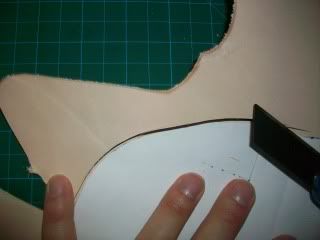
straps are cut (a little under 1"):
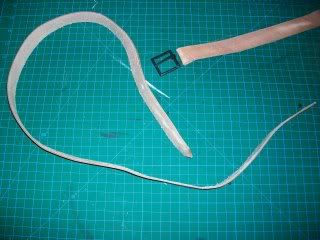
flap is wet and burnished down in place:
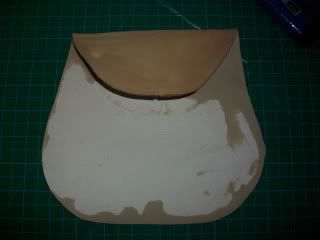
The assembled parts (this bag features an inner divider - something I prefer for these):
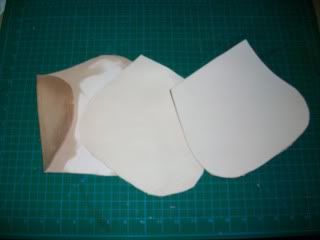
the straps are stitched down to the back panel (slightly canted out):
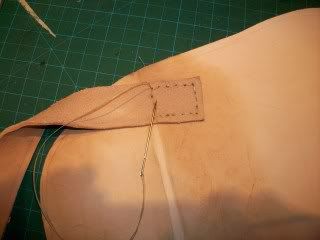
then all three panels are marked and the stitching holes are punched:

After that, the three panels are stitched together (outer edges face to face):
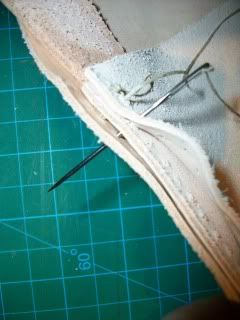
the assembled bag:
